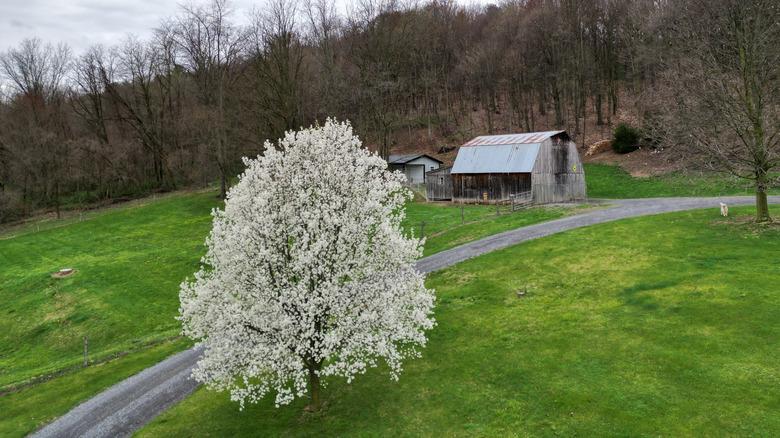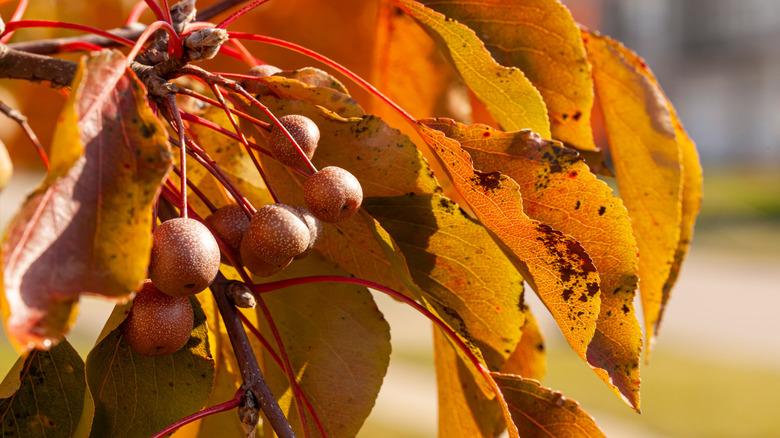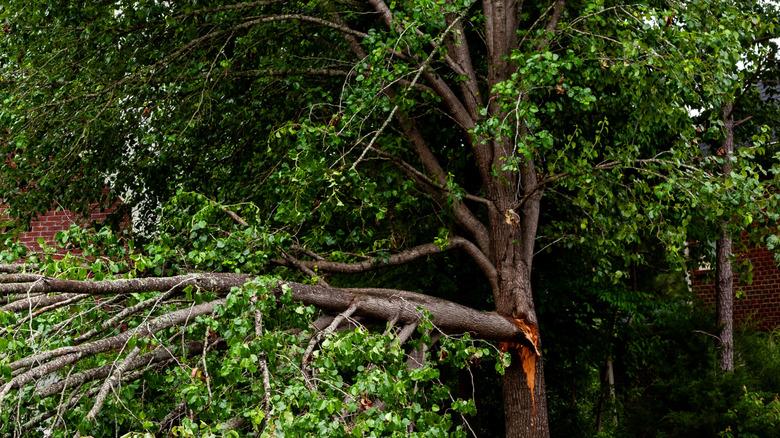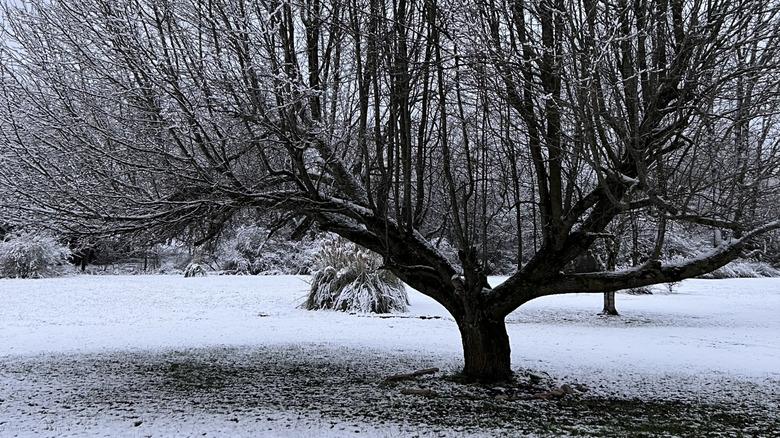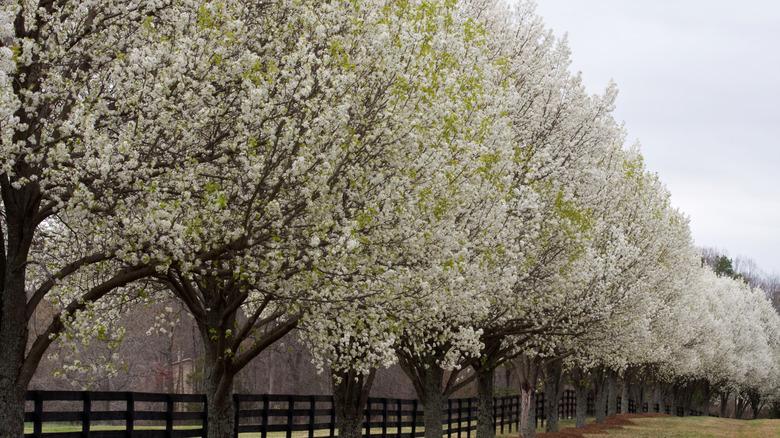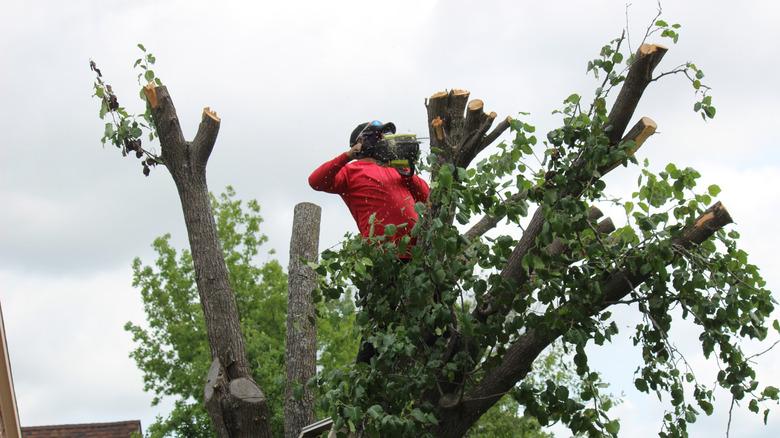Planting This Tree Should Be Against The Law. Luckily, It Is (In Some States)
I was sitting in a corporate department meeting 25 years ago when I realized how much I like trees. After I was silent for a while, staring out the window, my boss asked me if I had any thoughts. In retrospect, I suppose he was asking about the training we were developing. "Yes," I said. "Trees are amazing. I mean, look at that. Those are plants!" That was about two years before I owned my first Bradford pear tree, which changed everything. Two years before I learned how completely, and justifiably, one could come to hate a tree.
It's not every day that an entire species of tree becomes so disagreeable, so caustic to the public good, that grown-ups with real burdens to confront decide to spend a day making the tree illegal. But that's just the sort of ire the Bradford pear has inspired in at least three states, where it's now illegal to sell the tree.
None of this is a reaction to the fact that Bradford pears are mildly poisonous to humans. And none of this ire really stems from the smell of a Breadford pear in bloom, which has been compared with many unpleasant and even indecent things. But the odor most closely resembles rotting flesh, for reasons we shall see below.
How the scourge began
The Callery pear was first imported to the U.S. from China in the early twentieth century, first as an academic exercise by E.H. Wilson, and soon after by Frank N. Meyer, who should probably have stuck with lemons. Meyer grasped the potential of Pyrus calleryana as one of only two species that could be used as resistant rootstock for America's fire blight-stricken pear trees. Meyer wrote from China that the Callery pear "is nowhere found in groves; always as scattered specimens, and but very few large trees were seen." That sounds nothing like the Bradford pear, but Meyer's other notes about the tree foretold troubles to come. He wrote that it grew in all soil conditions, from "disintegrated rock" to shallow ponds. Another Frank — Frank C. Reimer, for whom Meyer was collecting seeds — noted that P. calleryana would survive being cut for firewood, and produced pronounced thorns. In retrospect, these were not good signs.
The USDA introduced the Bradford cultivar of the Callery pear as an ornamental tree in the 1960s, a self-sterile variety that couldn't be pollinated by its own subspecies. The Bradford, originally positioned as a small ornamental tree, grew as much as 50 feet tall and 30 feet wide. The Bradford pear is happy in a wide range of soils, and while it prefers full sun, it's able to tolerate partial shade.
Subsequent cultivars, cultivated to address specific shortcomings of Bradford, were able to cross-pollinate with Bradford and produce viable seed. Seeds that, it turned out, would grow into a stabby, smelly, aggressively invasive pain in the ecosystem.
Bradford Pears are invasive
So when you see a stand of tightly packed Bradford Pears, usually on an untended lot in suburbia, what you are looking at is a pack of escapees from a failed experiment. They might be beautiful for seven or eight minutes in early spring when they're in full bloom, but the real business they're about is out-competing native plants, providing precious little utility to the local fauna, and being all but impossible to remove.
The cross-pollination with other self-sterile Callery cultivars made these stands of fast-growing Bradford pear common along roadsides, but that was only the beginning of the trouble. Because of the plant's peculiar habits, it out-competed native plants and trees for sunlight, nutrients, and other resources. Ornamental pear trees have root systems that produce deep shade and branches that are so impenetrable to sunlight as to produce nearly complete shade ... meaning very little would grow under the tree. Any native plant attempting to compete with a stand of Bradford pears has virtually no chance, and if you've seen what a thicket of these things looks like in a field, you grasp this instinctively. YouTube is full of anti-Bradford videos that border on vitriol, but a short by @NativeHabitatProject called "Why you should kill your Bradford Pears!!" shows something of the extent of the tree's invasiveness. Nothing else grows where they have taken hold.
Bradford Pears are eager to fall you your house, your car, or you
There are two types of Bradford Pear owners ... those who have had major portions of the tree fall in their yards, and those who will have major portions of the tree fall in their yards. This is no self-pruning pecan we're talking about, but a profoundly weak hybrid that can get away with being weak because it's already choked out the competition.
That a street tree should be so fragile is obviously no one's idea of a good thing. Drive around in a neighborhood full of Bradford pears and you'll see why ... fallen limbs and half-trees are not an uncommon sight where mature Callery pears roam. This bug, not a feature, is a result of a branch structure that makes them susceptible to even the most mundane of storm winds or the thinnest coating of ice. This is largely owing to their branch structure, which produces deep, very weak V-shaped crotches where branches grow that are easily broken. So easily, in fact, that mature trees with heavy branches don't need the wind, but will self-destruct on their own. It's said that the U.S. National Arboretum removed the Bradford pears from its parking lots to stem vehicle damage. While this sounds too good to be true, it's certainly true that cities like College Park, MD and York, PA have decided to remove the trees.
The other downsides of Bradford Pears
The Bradford pear you bought at your local garden center might have seemed well-mannered, but these trees have a habit of hybridizing with other pear species and turning out offspring that are determined to be the most stabby things in the neighborhood. These aren't the thorns of wild blackberries, but needle-sharp daggers that can grow four inches long and are strong enough to puncture tractor tires. (In fact, they're not thorns at all, but sharp spur shoots, as if that helps anyone.) As you might imagine, the ability to puncture tractor tires does nothing for our ability to rid roadside lots of this pestilence. The upside is that once you smell a Bradford Pear in bloom, being stabbed might not seem like such a bad idea.
Because of their nearly vertical branch structure, and presumably because of their stabbiness, not a lot of birds make Bradford pears home. Caterpillars don't eat them and butterflies don't metamorphose in them. As a result, birds that rely on caterpillars as a food source can't feed in stands of Bradford pear. And some birds can't, or won't, eat the tree's fruit until it has been softened by a frost. Talk about uncooperative. But it's not as if Callery pears won't supply anything to the local ecosystem. They apparently rely on blowflies for pollination, which is why their blooms smell like rotting fish. Perfect.
The case for Bradford pears
A few earnest folks have attempted to make a half-hearted case on behalf of the Bradford pear, including experts who were quoted by the Chesapeake Bay Journal as sheepishly noting that "it's still a tree," and that's better than a parking lot. I'm not a big fan of parking lots, either. They're often difficult to get into, occasionally impossible to find your way out of, and almost always drastically mis-sized for their actual use. There's so much asphalt in Atlanta that it changes the weather where I live, 100 miles away. But I have definitely seen stands of Bradford pear that I'd happily pave over. And, in a moment of poetic justice, the original specimen of the "Bradford" cultivar was itself destroyed to make way for a parking lot.
I have some sympathy for the idea that a tree is better than no tree, except that it presupposes there was never an alternative ... which is a darned strange thing for an expert in invasive plants or an author of books about trees to presuppose. There are many ornamental trees that are great alternatives to Callery pears, including many closely related cherry trees and dogwood trees, which are sometimes mistaken for Bradford pears. And the idea that a Bradford pear is better than having no tree at all springing up in empty roadside lots ignores the fact that there would be other trees there, save for mowing (which would also scalp the Bradfords) and the fact that they're being choked out by an invasive tree species.
What you can do to end the scourge
Years ago, I picked up a couple of pots of a pretty Vietnamese herb called vap ca from a local nursery. I later read that the plant, Houttuynia cordata was an invasive that spreads rapidly via underground runners, and that when bruised the plant can give off an odor somewhere between citrus and rotten fish. Also diesel fuel. After much digging, I finally got rid of it, or at least I think I did; Penny Lewis, Executive Director of the Ecological Landscape Alliance, had vap ca reappear 20 years after she believed she had eradicated it. Vap ca, it turns out, can regrow from root scraps ... just like Bradford pears.
As natural as the instinct is, burning Bradford pears with fire is not the best approach to keeping this monocultural plague of stinky, stabby, collapsible nuisances from returning again and again like B-movie monsters. But there are things you can do, starting with not tolerating these trees on your own property. Mowing the saplings and cutting down mature trees is a start, but you must apply a herbicide like glyphosate and/or triclopyr to finish the job. But as long as a any Bradford pear can be pollinated nearby, the area must be constantly surveilled for new seedlings.
Some states, like North Carolina and Missouri, have gone so far as to institute a bounty for the killing of Bradford pears. Think about that: In some places, these trees are illegal. In others, there's a bounty on them. These trees deserve a wanted poster, not a spot on your front lawn.
